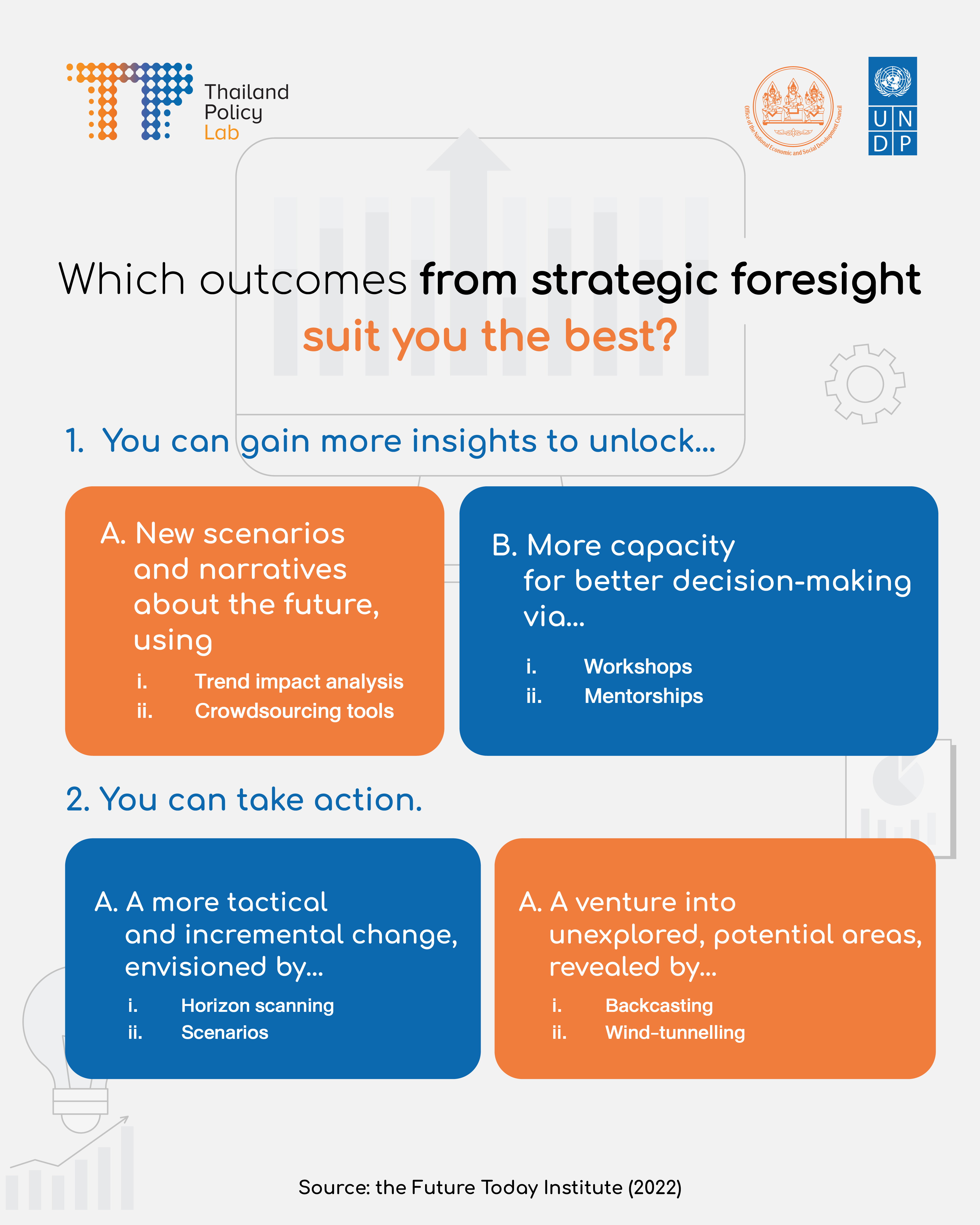You might have heard about strategic foresight before, or once in a while land yourself in a conversation about forward-thinking and how to look at things with a long-term perspective. But the future is as elusive as it is exciting. The problem with the vast expanse of uncertainty is that it is too vast to the point that it is impossible to find any room for initiation. Where to start? How will any of this be useful to us? This article will help you answer these questions, so that you will find your feet in the unknown terrain.
First question: what are the outcomes you are looking for?
Wayne Pen, Research Director of the Institute for the Future (IFTF), suggests that the first step towards strategic foresight is to define what you hope to achieve from the process. There is a wide range of possibilities, but we can narrow them down to 2 broad categories:
- Content – forecasts and other forms of foresights will be your ultimate target. Your work will be centred around foresight content generation.
- Capacity – you want forecasts and other forms of foresights to help you make a better decision, enhance your ability to mobilise change at your will, or prepare yourself for sweeping transformation.
Content-focused work will drive you towards narratives and visions of the future; developing plausible and solid scenarios is the heartbeat of your objective. Capacity-focused projects, on the other hand, use foresight to nudge involved parties to expand their thinking about assumptions and decision-making. Capturing lessons learned is the key here. This means that you will have to think about creating a safe space for people to make sense out of foresight as well.
Defined outcomes are crucial, as they will set the tone for your purposes and approaches to strategic foresight. Pen notes that realistic goals and expectations for one’s foresight project should be your pursuit, as you have to bear in mind several limitations – of our time frame, budgets, capacity, readiness, and potential impact of our contribution. What we want might not be what we can do, or what we need at the moment.
The Future Today Institute also offers a similar approach to scoping out foresight work. It divides the outcomes into 2 categories:
- Insight – 1) you want to dive into emerging trends and challenges as well as uncharted territory of new opportunities, and 2) use that knowledge to better inform your strategy.
- Action – 1) you want incremental and tactical actions or 2) aspire for a radical transformation of your organisation.
After assessing your needs and your capacity, you might know where you are headed for. This leads us to…
Second question: which missions do you need to tackle in order to reach your goals?
If you are insight-oriented, you might want to pay extra attention in evidence-gathering and trend analysis. A well-crafted scenario of the future points towards long-term outcomes, and it requires you to thoroughly identify emerging signs of change and structural drivers at play through horizon-scanning. However, if you want to improve your strategy, the potential outcomes that matter should be something that is likely to manifest itself in a short run, or coincides with your strategic time frame. The priority and weight of each emerging trend will also depend on its relevance to your strategy.
Example
| Mauritius wants to break away from the middle income trap by transforming public services into a more innovative backbone of change. The government intends to envision the scenarios of Mauritius in 2025 based on interaction between technology, the public-private sector relations, and emerging patterns of public services delivery.
In order to achieve these outcomes, the government decides to use the following foresight methods:
Source: The Foresight Manual – Empowered Futures for the 2030 Agenda (p. 38) |
If you aim for actional opportunities, especially ones that expand the horizon of your organisation, you will need novelty. You might want to pinpoint possibilities – such as undiscovered and potential areas of growth or new ways of problem-solving or adaptation – and, at the same time, develop a tactical framework that helps even out all the risks and odds against your future moves as much as possible. In case a groundbreaking change is what you need, you might need tools that allow you to identify your future outcomes and work backwards to the present (backcasting) or ones that ask you to constantly scrutinise the impact of your decisions (wind-tunnelling).
Example
| The government of Cabo Verde wants to identify untested opportunities for development in the 21st century. One of the country’s most prominent needs is the new economy centred on the private sector’s growth and citizens’ wellbeing, and responsive to new development of civil-state relations.
In order to achieve these outcomes, the government uses foresight methods that are near-identical to the Mauritius case. However, the government of Cabo Verde chooses to focus on priority policy areas/programs as well as new government structures, such as sector transcending. Source: The Foresight Manual – Empowered Futures for the 2030 Agenda (p. 35) |

